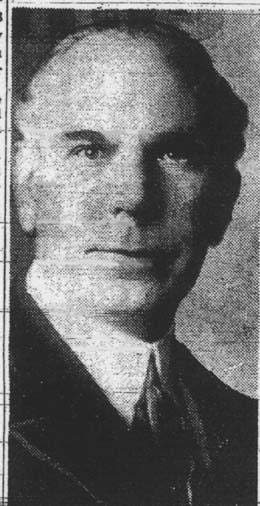On Saturday, December 7, 1929, Cannie (Ford) Trimble (1871-1929) drowns and her husband, Seattle millionaire capitalist William Pitt Trimble (1863-1943), and sons Ford and William Pitt Jr., narrowly escape death when Trimble's automobile plunges off the King Street Pier into Elliott Bay.
On the afternoon of December 7, 1929, the Trimbles had driven from their home at 1206 University Street to West Seattle in their 1929 Pierce Arrow sedan to view some property belonging William Pitt Trimble. On the way back home, they stopped to inspect the King Street Pier, which also belonged to Mr. Trimble. Ford Trimble was driving the car, William Jr. was in the right front seat, and Mr. and Mrs. Trimble, along with pet German Shepherd "Jiggs" were occupying the back seat.
The Pierce Arrow's engine had not been running properly so, while the car was parked on the pier, Ford got out to adjust it. After several minutes of tinkering with the engine, Ford asked his brother William Jr. to step on the starter button. Tragically, the car had been left in gear and when William Jr. started the engine, the vehicle leaped forward. Ford jumped onto the running board and attempted to open the driver's door and stop the car but was unsuccessful. The car accelerated, smashed through a railing and plunged, nose first, into Elliott Bay. The heavy Pierce Arrow, with all four Trimbles on board, landed about 20 feet from the end of the pier and sank like a stone in 36 feet of water.
Ford Trimble, clinging to the outside of the Pierce Arrow, tried to open the driver's door as it sank, but was foiled by the increasing water pressure. Unable to hold on to the car, Ford swam to the water's surface. Mr. Trimble was able to open one of car's rear windows and William Jr., in the front seat, forced his door open. They were sucked out of the car by the water pressure before they could grab hold of Cannie Trimble.
Even though they were burdened with heavy overcoats, William Trimble and William Jr. struggled to the surface where they joined Ford treading water. Cannie Trimble and Jiggs remained trapped in the vehicle's back seat. The three men continued struggling in the water until they were rescued by nearby fishermen who had witnessed the accident from their rowboats.
A Seattle harbor patrol boat from the nearby landing at the foot of Washington Street was immediately summoned to the scene. The fire boat Alki, docked at the fire station at the foot of Madison Street, arrived shortly thereafter with diver Henry Finch. The boats began grappling operations at once and within a short time the grappling hooks snagged the car. While the Alki was raising the vehicle to the surface, it slipped off the hooks and plunged back to the bottom of the bay.
Further unsuccessful grapplings had pushed the car farther into the bay than where it originally lay. Finally, after about three hours, the Alki got a secure hold on the automobile and was able to winch it almost to the surface. The diver, Henry Finch, went down into the water and recovered the body of Mrs. Trimble and Jiggs from the back seat. Doctors aboard the Alki made several efforts to revive Cannie Trimble with a "pulmotor" (resuscitator) but she was pronounced dead at the scene.
The results of a coroner's inquest determined the death of Mrs. Cannie Webb Trimble was accidental but avoidable. Statistics revealed that over the past two years (1928-1929) seven people, excluding Cannie Trimble, had died in Seattle from similar accidents, a fact that had been well publicized in the newspapers. King County Coroner William J. Jones stated "I cannot be too emphatic in warning motorists against this practice [of leaving their car engines in gear] which has been the cause of several similar mishaps costing many lives" (Seattle P-I).
To compound the tragedy of the death of his wife, William Pitt Trimble, one of the wealthiest men in Seattle, also lost most of his fortune when the stock market collapsed on October 29, 1929, causing investments and real estate values to hit bottom. Trimble retired to a small house on Capitol Hill where he lived alone until his death on March 19, 1943.

